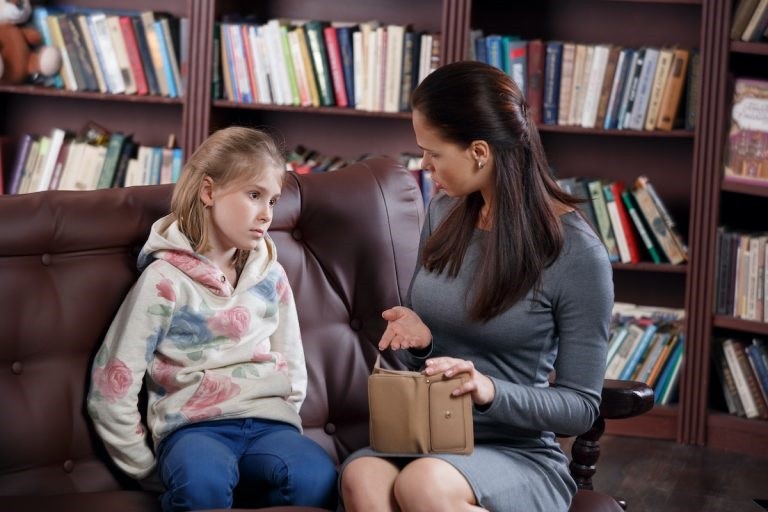
Every parent’s fantasy:
“Eric, why did you just whack your brother?”
“Sorry, mama, I’ve been thinking about my behavior, and I realize I need to stop hitting my brother. It’s not helpful. From now on, I’ll make sure we work through our disagreements peacefully.”
Fantasy indeed. Not going to happen with sibling rivalry, at least not with any child I know.
And yet, under certain circumstances, children can learn right from wrong by reflecting on the ethical dimensions of their behavior, often with our help.
Dan Siegel and Tina Payne Bryson, authors of No Drama Discipline, tell a wonderful story about a mother and how she helped her six year-old daughter to reflect on her behavior after she had shoplifted crayons.
Learning right from wrong, the natural way
The mother and her daughter had been at a store a few days earlier. The daughter had wanted her mom to buy a set of crayons, but mom had said “no.” A few days later, mom discovered the box in her daughter’s room as they were cleaning together.
This kind of discovery would be enough to trigger an immediate emotional reaction from me. What are these doing here?! You did what?! I can’t believe it! But this mom took a different approach.
As she approached her daughter with the stolen crayons in hand, mom noticed her daughter’s eyes got wide and full of fear. She knelt down to talk with her daughter, who at first denied taking the crayons, then said she didn’t remember, and then said that it was OK because the “lady with the big hair,” as she described the saleslady, had not seen her take them.
Hold back and let your child’s reaction take center stage
At this point, as Siegel and Bryson relate, mom “asked lots of questions that encouraged her daughter to think through concepts she hadn’t yet considered: ‘Do you know what taking something that doesn’t belong to you is called?’… ‘Is stealing against the law?’… ‘Do you know that the woman with the big hair in the store spent her money to buy these crayons so she could put them in her store?’”
Soon tears began to stream down her daughter’s cheeks. She clearly felt bad about what had happened. Mom let her daughter sit with her uncomfortable feelings for some time. No lecturing, just quiet time and gentle conversation. Eventually, they made plans to return the crayons and mom provided some comfort to her daughter to help her recover.
This example illustrates how you can sometimes create the space needed for your child to consider the ethical consequences of their actions and learn right from wrong. Your own reaction needs to stay in the background while you coach and support your child so that their reaction can emerge and take center stage.
Through this process, your child can become more aware of their own moral compass and more likely to pay attention to it, even when you aren’t looking—indeed, even when nobody is looking.
